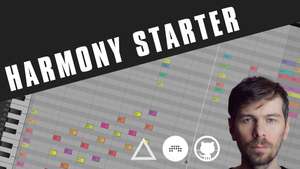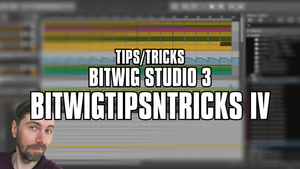
Harmony Starter - How to build Scales & Chords as a noob (EN/DE)
Hello folks,
Today some very much compressed information in this harmonics tutorial but I summarize it here again textually.
Every key has its own keynote. Let's say C. From this all other notes can be derived depending on the mode.
All semitones are chromatic until we reach C again in the next octave. Exactly 12 notes.
Diatonic are 7 notes, if we select only the white keys from C to C we have C major. Once we have selected the notes, we can transpose all notes and get a different key in the same mode.
If we start on another white key / note and select all white keys until we arrive at the same key/note one octave higher again, we have formed another diatonic mode:
D dorian
C major / ionian / major
B locrian
B minor / aeolian / minor
G mixolydian
F lydian
E phrygian
(ionian & aeolian are so popular in western music, they have their own names: major & minor)
Pentatonic: With the black keys we can create 5 tone keys. Let's start at D# and select all black keys/notes we get D# minor pentatonic. Let's start with F# and select all black keys/notes we get F# major pentatonic and so on.
From these keys we can now extract and form triads or chords. Each of these chords gets a Roman number as description and each of these chords is assigned to a chord function family.
With the functions we can easily select chords to create chord sequences. I try to show this in the video, maybe I'll extend this blogpost to include it more exactly as text.
Hallo Leute,
Heute etwas sehr viel komprimierte Infos in diesem Harmonielehre Tutorial aber ich fass es hier noch mal textlich zusammen.
Jede Tonart hat ihren Grundton. Sagen wir C. Daraus lassen sich je nach Modus alle anderen Noten ableiten.
Chromatisch sind alle halbtonschritte bis wir wieder C in der nächste Oktave erreichen. Genau 12 noten.
Diatonisch sind 7 noten, wenn wir nur die weißen tasten von C bis C selektieren haben wir C Dur. Haben wir die noten sselektiert, können wir alle Noten transponieren und erhalten eine andere Tonart in dem selben Modus.
Starten wir auf einer anderen weißen Taste / note und selektieren alle weißen tasten bis wir wieder bei der selben Taste/Note eine oktave höher ankommen, haben wir einen anderen diatonischen Modus gebildet:
- D dorian
- C major / ionian / Dur
- B locrian
- B minor / aeolian / Moll
- G mixolydian
- F lydian
- E phrygian
(ionian & aeolian sind so populär in der westlichen musik, sie haben ihre eigenen Bezeichnungen: Dur & Moll)
Pentatonik: Mit den Schwarzen Tasten können wir 5 Ton Tonarten erstellen. Starten wir auf D# und selektieren alle schwarzen Tasten/Noten erhalten wir D# Moll pentatonisch. Starten wir auf F# und selektieren alle schwarzen Tasten/Noten erhalten wir F# Dur pentatonisch usw.
Aus diesen Tonarten können wir nun Dreiklänge oder Akkorde extrahieren und bilden. Jeder von diesen Akkorden bekommt eine römischen Ziffer als Beschreibung und jeder dieser Akkorde ist einer Chord Funktions Familie zugewiesen.
Mit den Funktionen können wir einfach Akkorde auswählen um Akkordfolgen zu erstellen. Ich versuche das im Video enstprechend darzustellen, evtl. baue ich diesen Blogpost noch aus um es auch genauer als Text zu erfassen.



